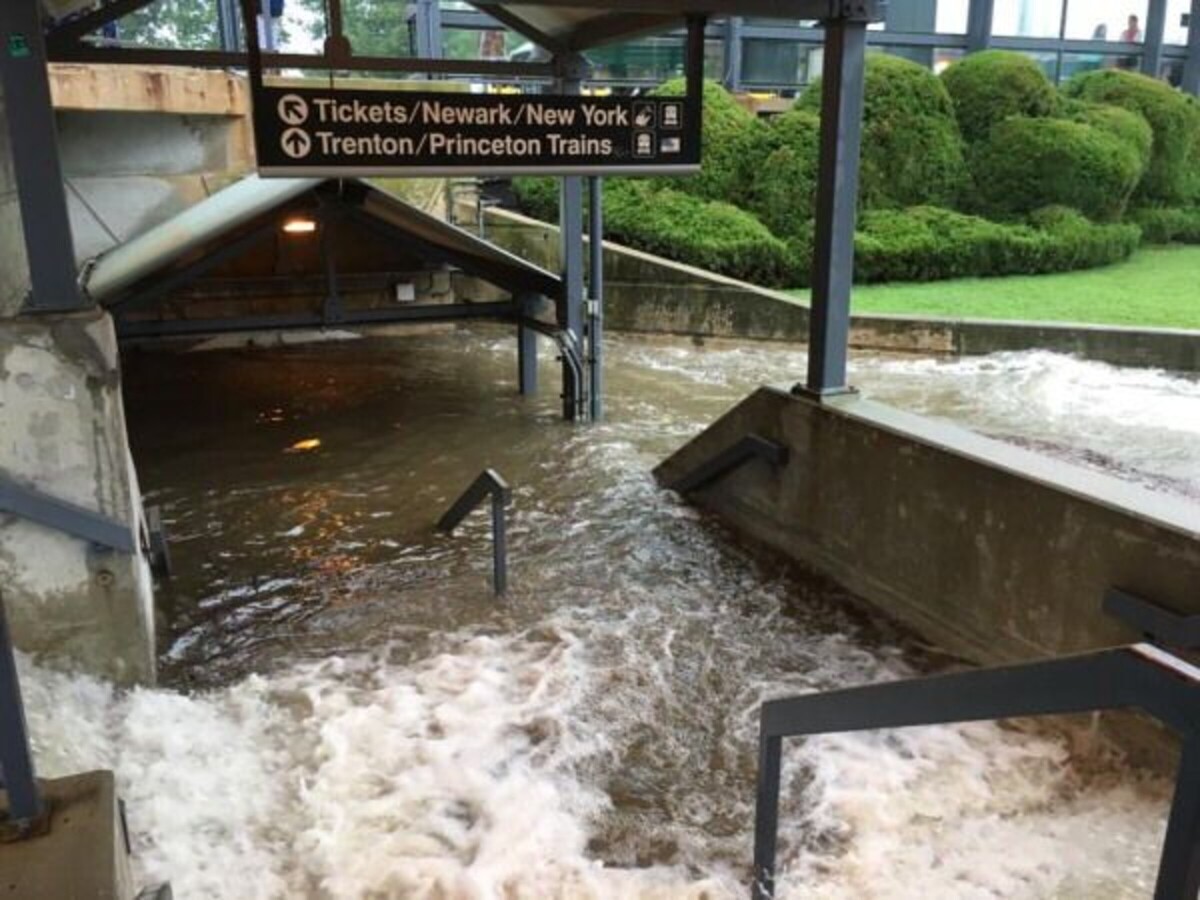Image


New Jersey’s residents face threats from the devastating impacts of extreme rainfall events which are expected to intensify in their frequency and severity. The new Inland Flood Protection Rule protects public safety by ensuring that areas at increased risk are well defined and that new and reconstructed projects in these areas are designed using the best available, climate-informed precipitation data. Using such data is critical to protecting New Jersey’s assets, economy and, above all, our people from the catastrophic effects of worsening floods.
On June 10th, the West Windsor Township Council introduced a revised ordinance for Stormwater Management. This revision was required following the adoption of the NJ Department of Environmental Protection's Inland Flood Protection Rule, effective July 17, 2023.
I voted against the introduction of this municipal ordinance revision because I felt that the revisions were not strong enough.
This ordinance will be reviewed at the next Planning Board meeting on:
June 19, 2024 at 6:30pm.
The hearing for adoption of this ordinance is scheduled for the next Council meeting on:
June 24, 2024, at 7:00pm.
If you have an opinion on this issue,
please attend these meetings and make your voices heard!
Both meetings will be held at the Municipal Building, Room A (271 Clarksville Rd).
At the previous Council meeting, this body made recommendations regarding changes and improvements to the new ordinance. I specifically requested enhancements to further protect West Windsor residents from flooding and water pollution. I requested, during the meeting and in writing to:
1) reduce the threshold definition for major development
2) to require major developments to treat runoff from all impervious surfaces for water quality
3) to require stormwater management for minor development
4) to address redevelopment
5) to require the use of Low Impact Development techniques
6) to include maintenance and inspection reporting requirements.
None of these enhancements were included in the ordinance that was submitted for introduction.
In addition, members of the community have asked that language be added regarding how proposed revisions to previously approved plans should be handled. Specifically, their request is that any proposed revision to an existing plan, where construction has not begun, should require adherence to the current ordinance.
The proposed revised ordinance includes the minimum standards set forth by the NJDEP, as well as an enhancement regarding driveways. It is not bad, but we can do so much better.
If we claim to be environmentalists, if we claim to want to mitigate flooding in our community, if we claim that we want to keep our water clean, then we should turn our claims into actions, demonstrate leadership, and enhance this ordinance to further protect our community.
The following is a summary of my prepared remarks during the discussion of this ordinance at the May 28th Council meeting.
The NJ Department of Environmental Protection’s model ordinance sets minimum standards for stormwater management. It also encourages municipalities to “undertake additional actions including ordinances with standards stronger than the statewide minimum requirements.”
Last year, the Watershed Institute released an Enhanced Stormwater Management Model Ordinance, based on the NJDEP model ordinance and held a webinar that provided a technical overview, which was recorded, and is available right here.
Flooding is an urgent problem for municipalities. This problem is exacerbated by the continued increase in development. According to a NJDEP's report, the state is experiencing significant increases in precipitation and storms resulting in extreme rain events due to climate change. The report predicts that the size and frequency of floods will increase as annual precipitation increases. As a result of this report, among other factors, the DEP adopted the Inland Flood Protection Rule.
Existing state regulations and many municipal stormwater control ordinances are inadequate because the current "quantity requirement" is misleading. It’s based on a rate and not volume. New developments meet this requirement by reducing the rate of stormwater runoff, yet the total volume of runoff has increased, leading to flooding and stream erosion. Revising ordinances to manage stormwater volume through onsite retention or other reduction measures is essential.
A significant contributor to flooding and poor water quality is inadequate management of stormwater runoff. The goal of a municipal stormwater ordinance should be to protect and improve water quality while mitigating flooding for the public health, safety and welfare of the community.
The Watershed Institute Enhanced Stormwater Management Ordinance includes the following:
I believe that municipalities must act aggressively to address the serious problems of water pollution and flooding.
All of the enhancements found in the Watershed Institute model ordinance should be considered for adoption as allowed in the current Municipal Separate Storm Sewer System (MS4) permit.
Furthermore, the new NJ MS4 Permit will require towns to come up with a plan to reduce flooding by 2027. We should be doing everything that we can to minimize flooding now, especially in terms of new development. If we ignore this, it will result in a significant future taxpayer bill to remediate the recurring flooding damage in West Windsor, which are only going to get worse.
Dan Weiss is the newest member of the West Windsor Township Council. He ran on a platform of environmental stewardship and transparency. You can learn more about him at danweissnj.com and numerous social media platforms.